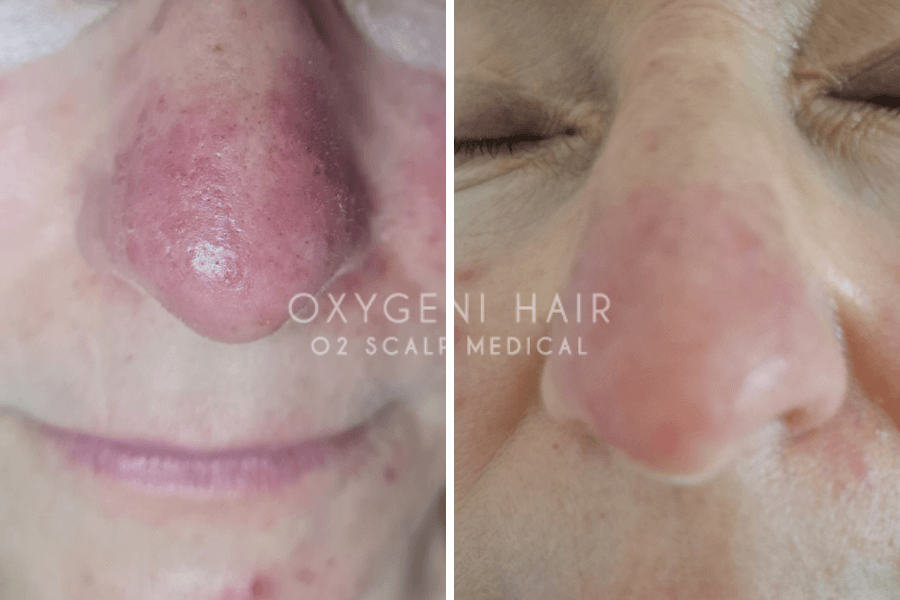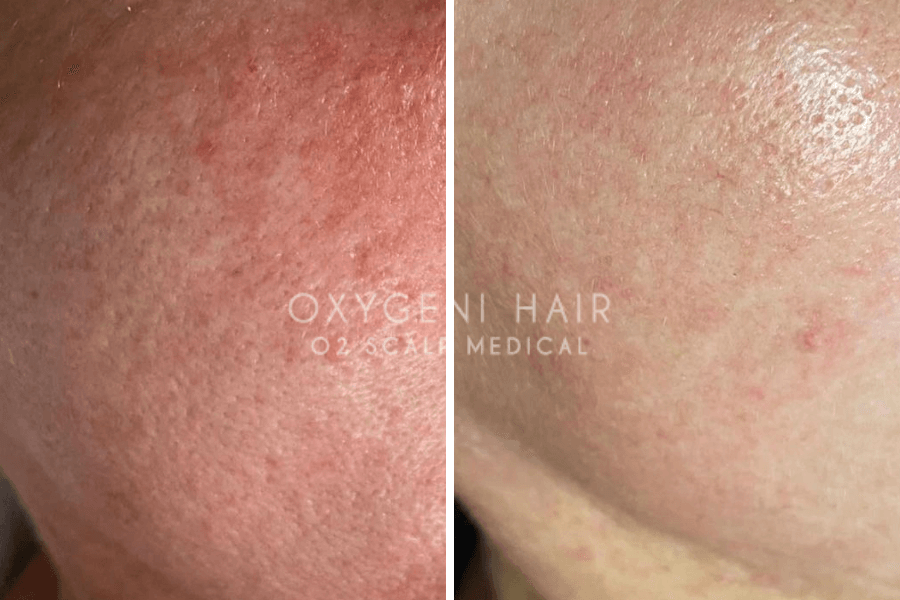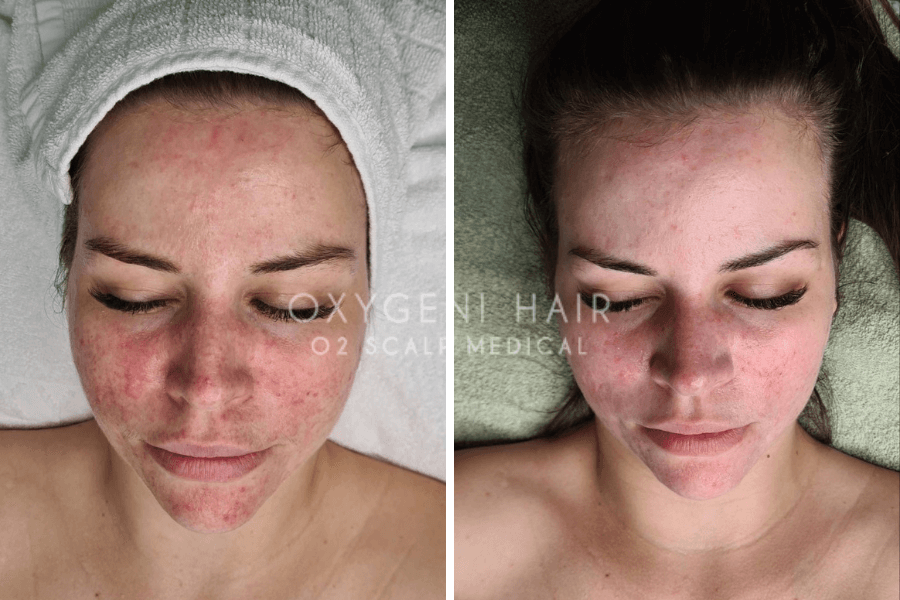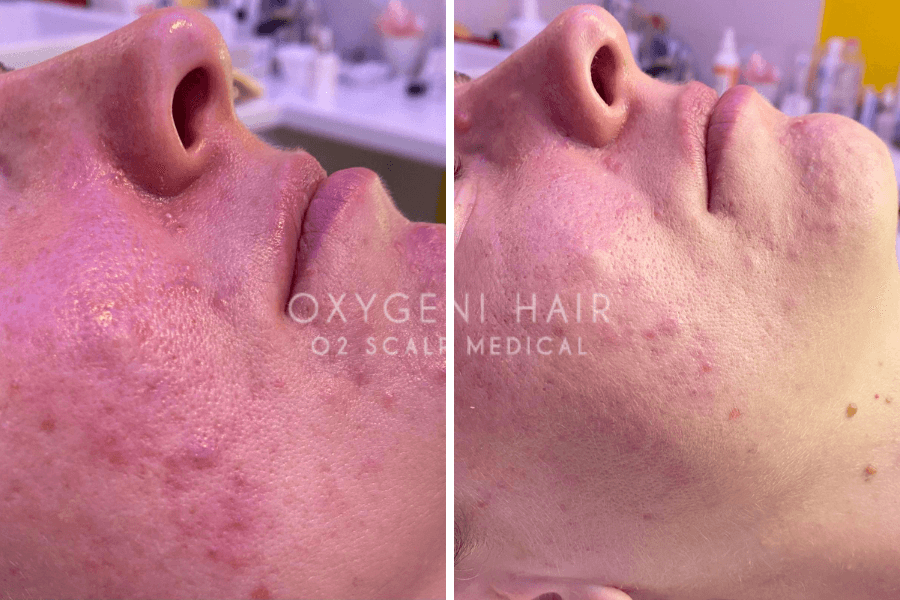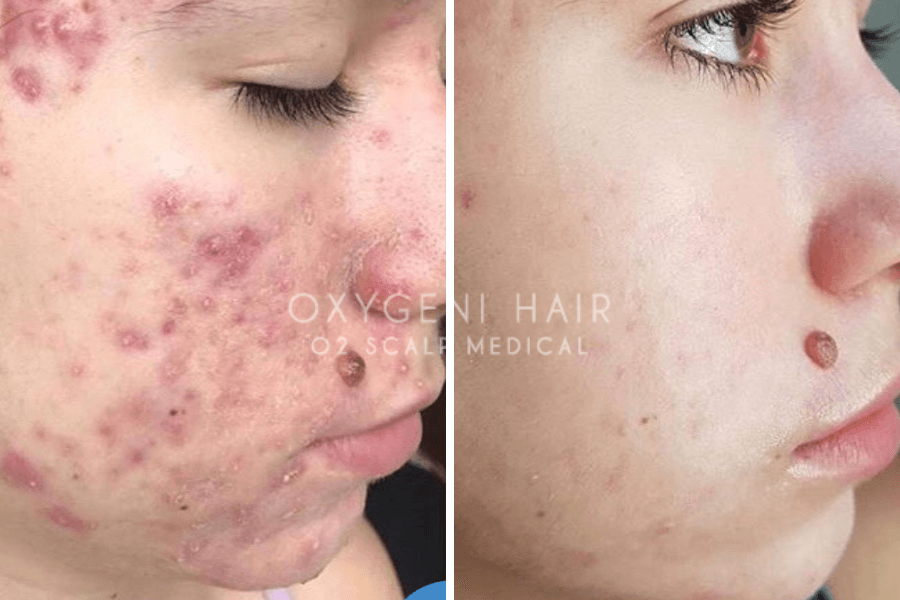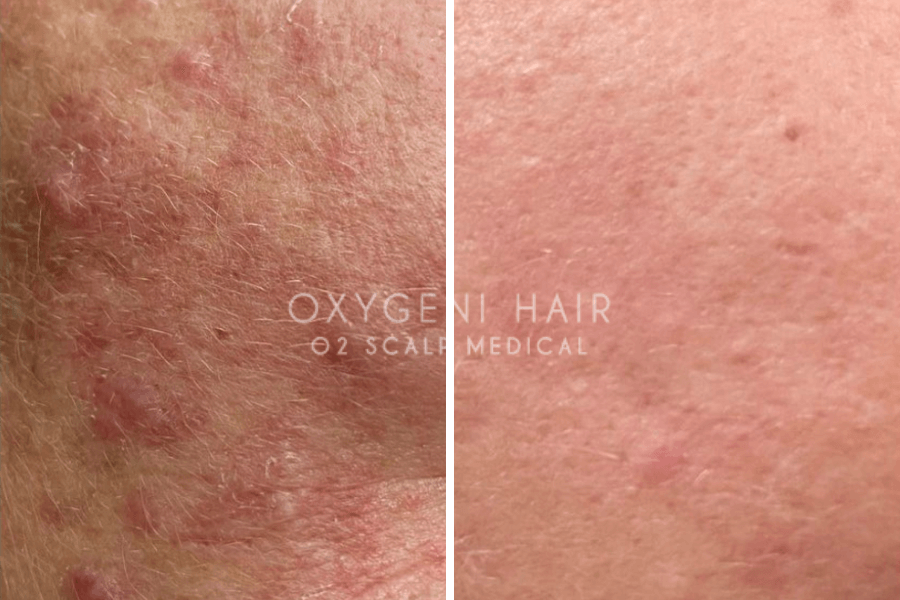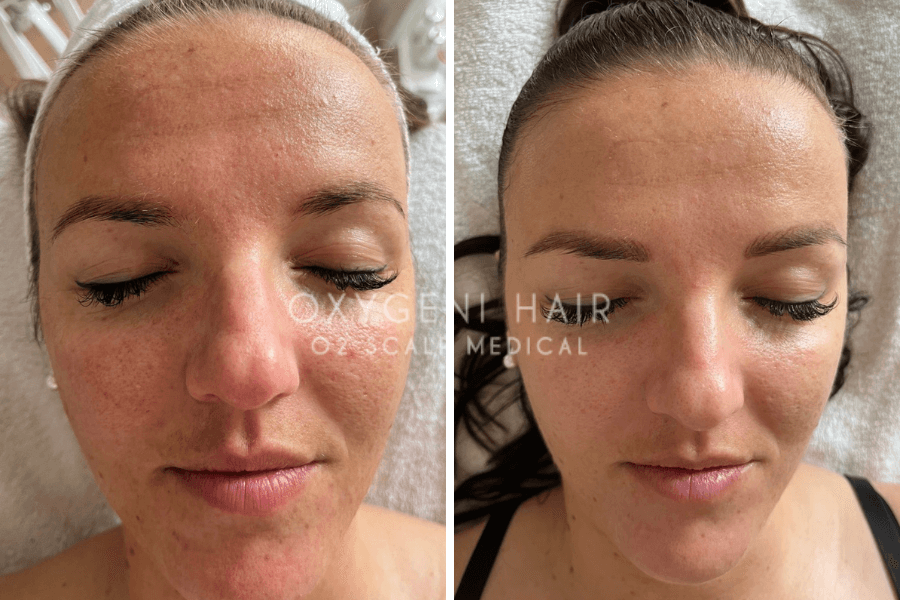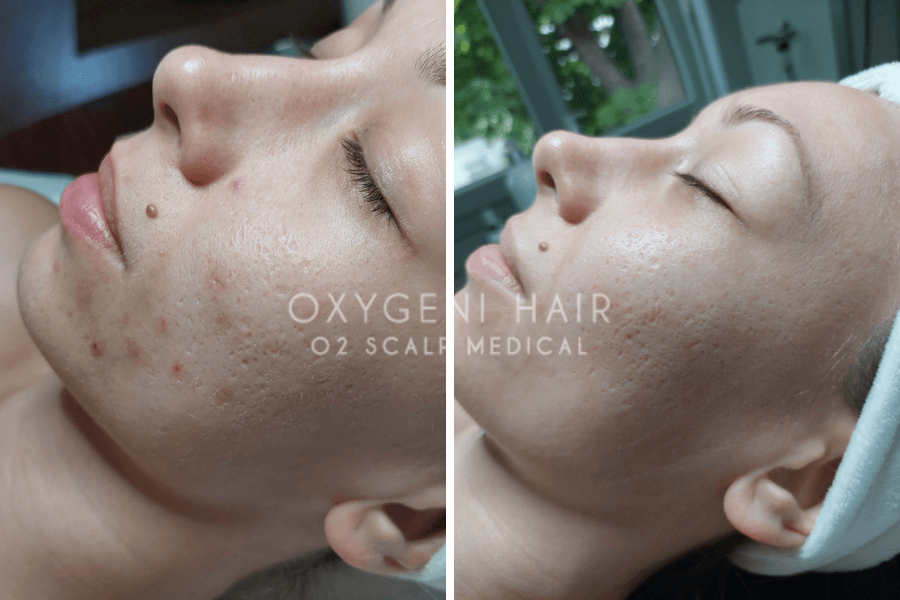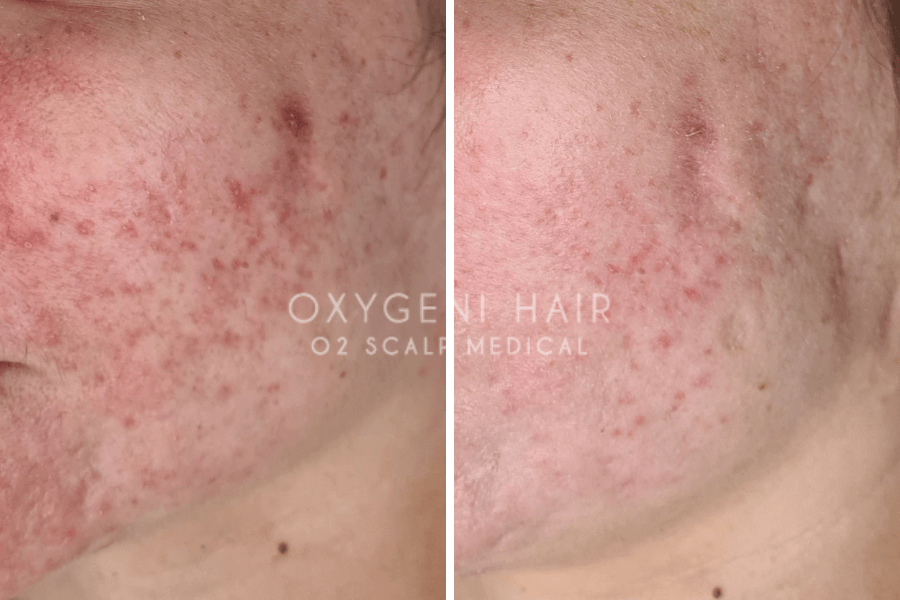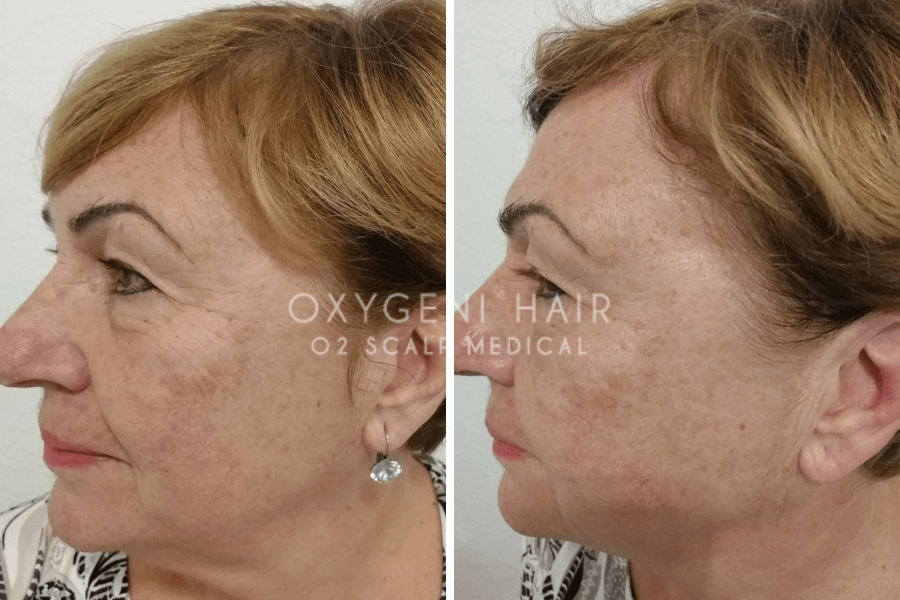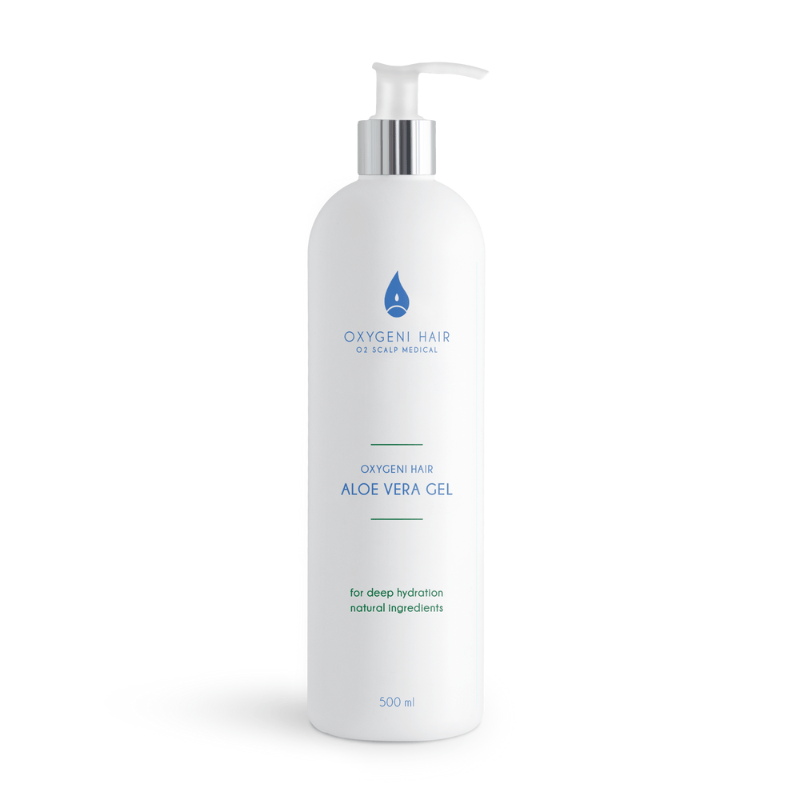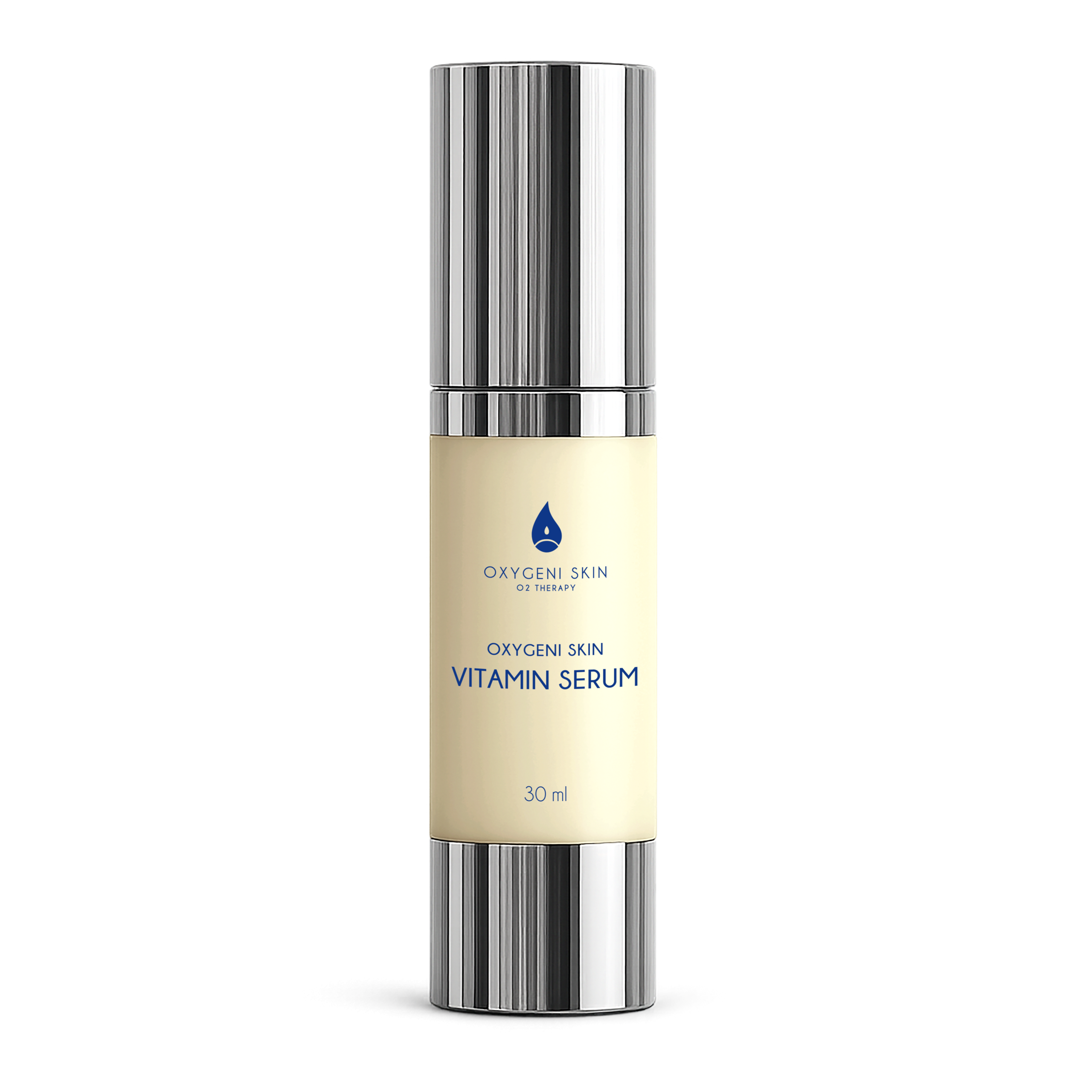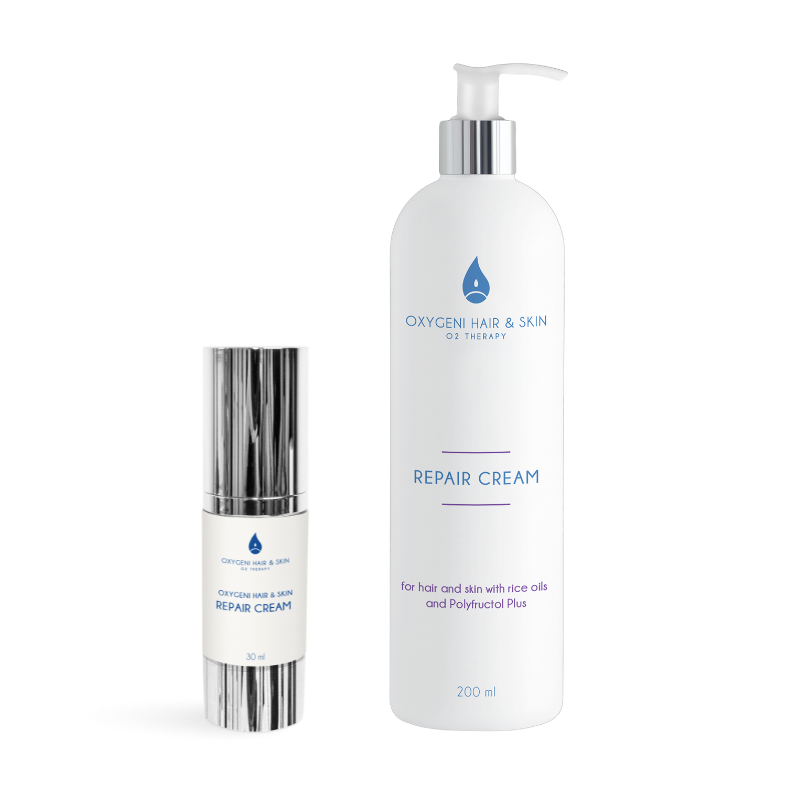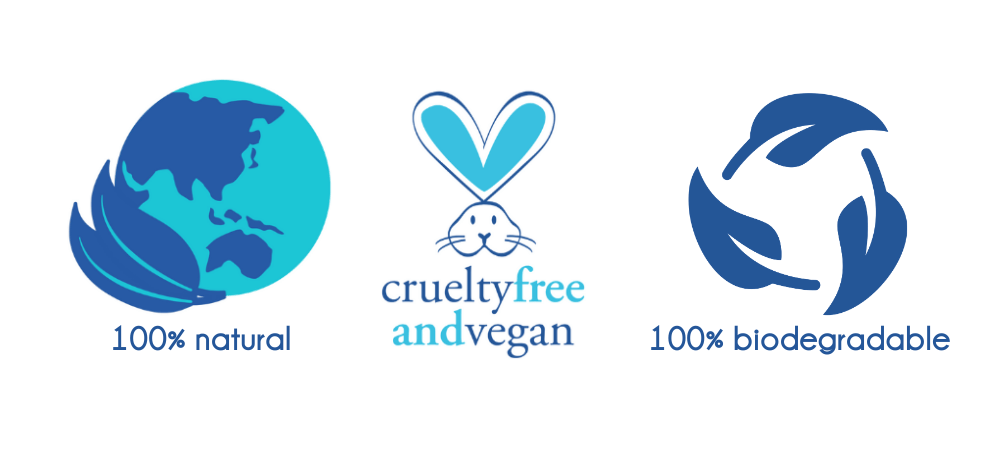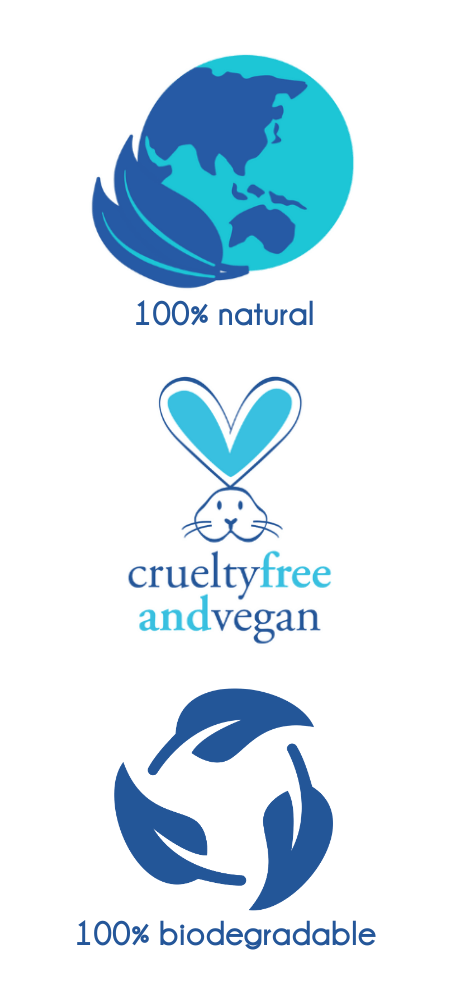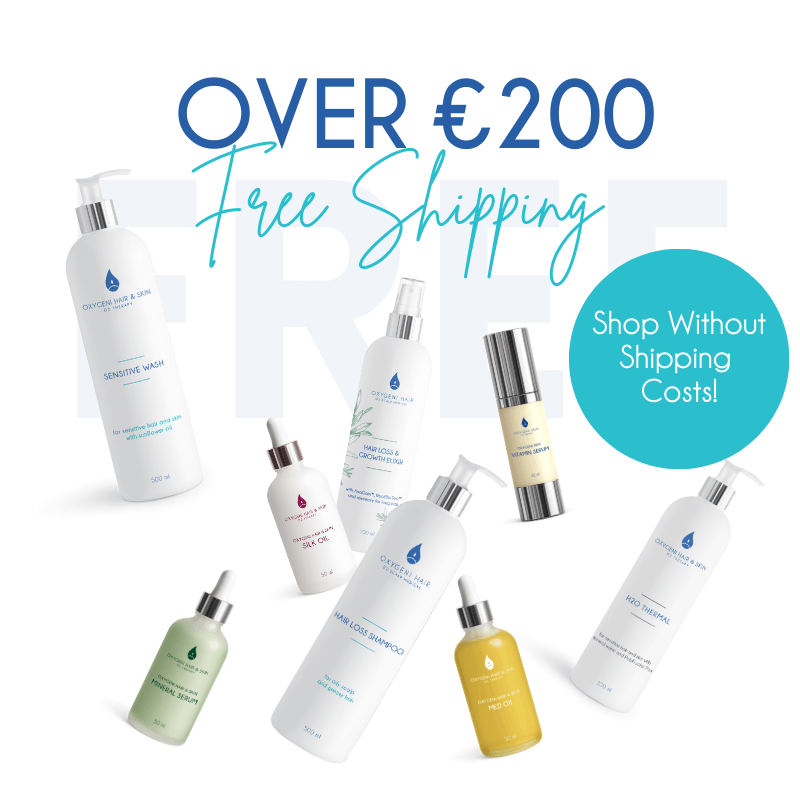Rosacea
Treatment of Rosacea
Development, Symptoms, and Treatment Options
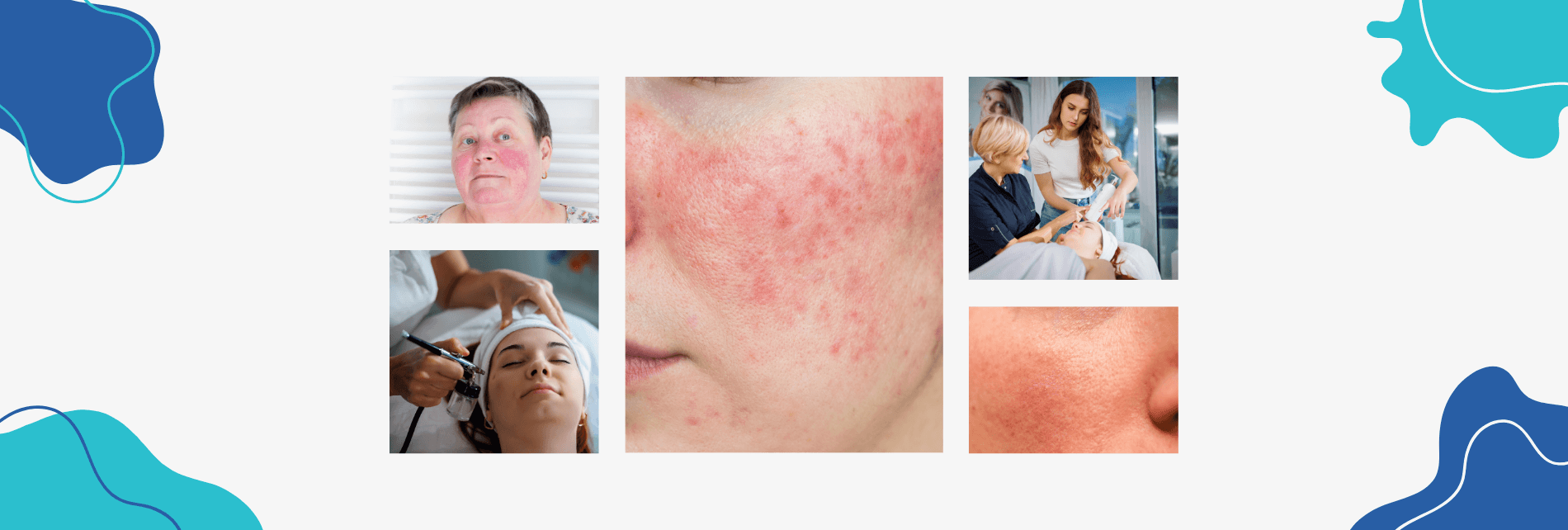
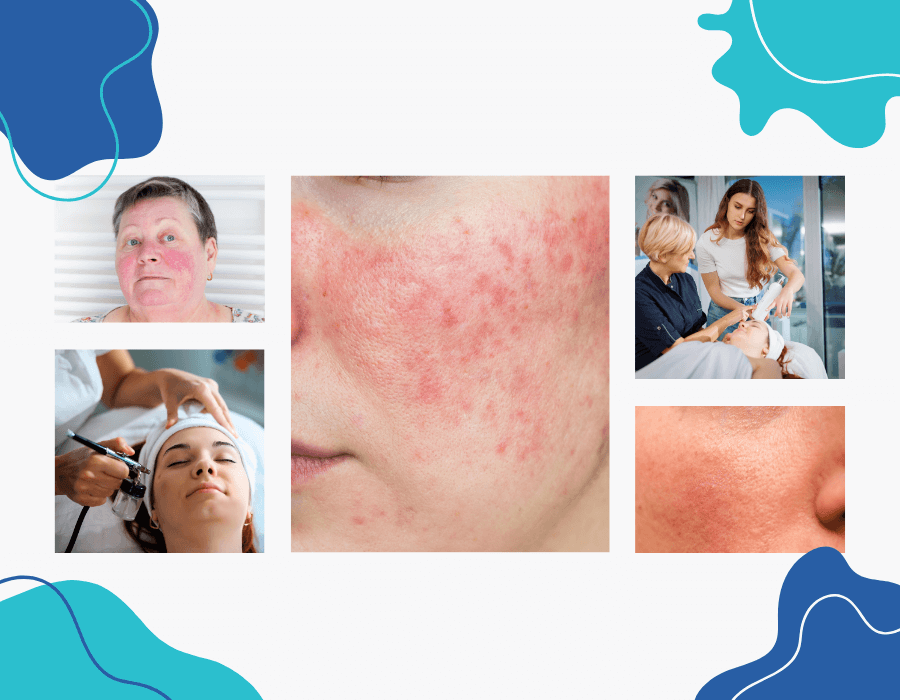
WHAT IS ROSACEA AND HOW CAN IT BE TREATED?
Redness, flushed skin, inflammation – Recognize and treat rosacea!
Rosacea is a chronic skin condition. It is characterized by redness and inflammation on the face, most commonly affecting middle-aged women, though men can also experience it. The development of the condition can be the result of several factors working together. Environmental influences, such as sun exposure, wind, and cold weather, all play a role in the developement of symptoms.
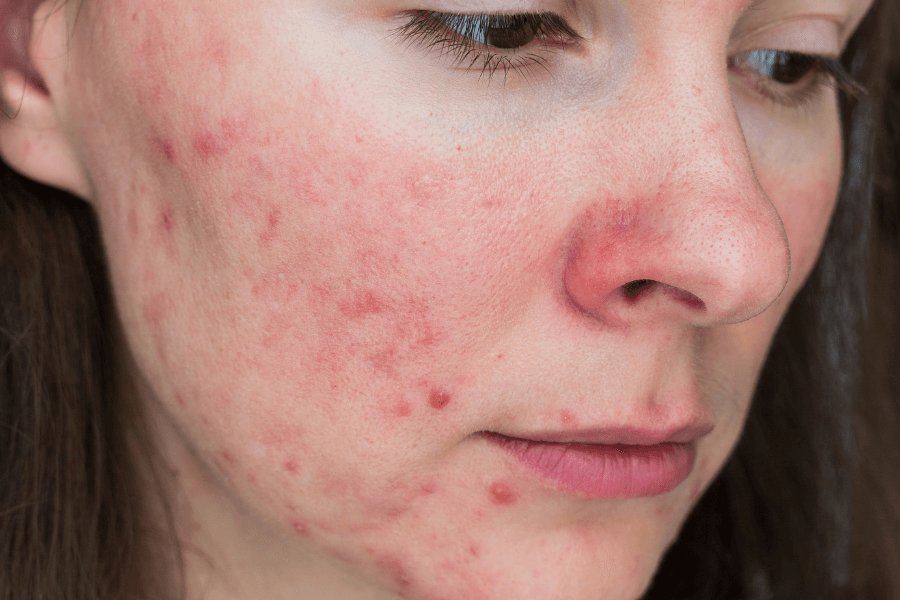
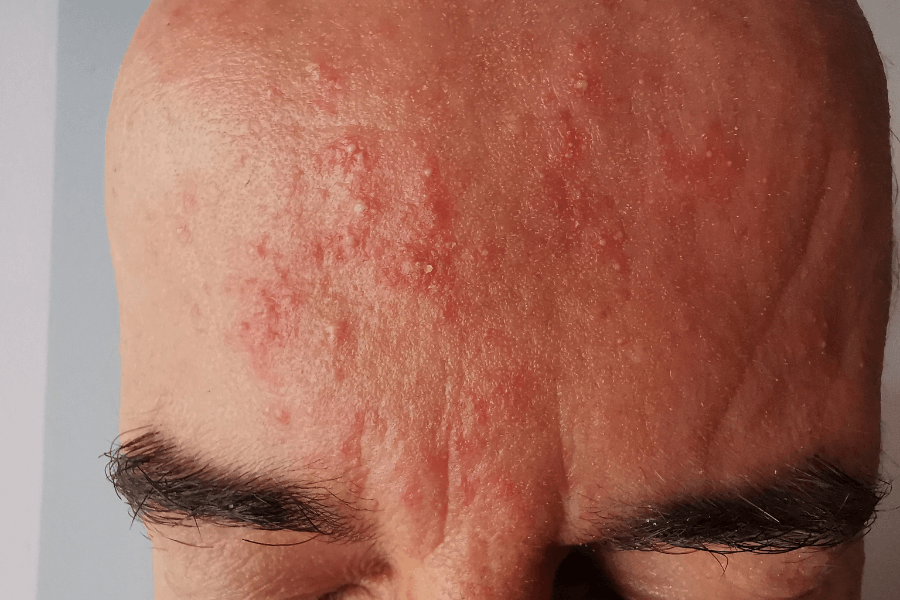
Development of Rosacea
According to gathered data, rosacea affects at least 5.46% of the adult population. While it can occur in anyone, it is most common in women and those with fair skin. The highest procentage is found in the 45-60 age group, though symptoms often begin to appear after the age of 30. Although rosacea can affect children and adolescents, it is extremely rare. The likelihood of developing rosacea significantly increases if there is a family history of the condition.
It is important to note that the exact mechanism of rosacea’s development is still not fully understood. However, with expanding medical knowledge and research, more effective methods for treating and controlling symptoms are being discovered. In addition to genetic predisposition, environmental factors and lifestyle habits can also contribute to the worsening of the disease. The combination of medical therapy and lifestyle changes is key to treating rosacea and minimizing symptoms.
Research suggests that rosacea may be a symptom of the following conditions:
- Microscopic skin mites (Demodex): These tiny mites occuring on the skin can multiply excessively, causing redness and rashes.
- Infection: Some studies suggest that the bacteria H. pylori can cause infections that lead to the development of rosacea.
- Protein dysfunction: When the protein (cathelicidin), which is important for skin protection, does not function properly, it can result in redness and rashes.
- In other cases, rosacea may be the result of an overactive immune system reacting to environmental changes.
Researchers have also raised the possibility that rosacea could be an autoimmune condition. In individuals diagnosed with papulopustular rosacea, a bacterium called Bacillus Oleronius is often detected, which triggers an excessive immune response. This suggests that the immune system’s defense mechanisms mistakenly attack the healthy cells of the skin.
Recognizing Rosacea – What Are the Symptoms?
Rosacea primarily appears on the face, usually on the nose and cheeks. Although less commonly, it can also affect the forehead, chin, ears, neck, scalp, upper chest, or back.
It is important to note that rosacea can affect the eyes as well, with an estimated 50% of sufferers experiencing this symptom. This form is called ocular rosacea and causes inflammation of the eyelids, conjunctiva, or cornea. Symptoms include redness of the eyes, a burning or stinging sensation, dry eyes, itching, and blurry vision. Additionally, the eyelids may become red, and the eyes more sensitive to light. Often, rosacea is not suspected in the early stages, and it is only diagnosed by a doctor later on. Timely treatment is crucial, as untreated ocular rosacea can lead to more serious eye problems, potentially causing permanent damage to vision.
The symptoms of rosacea can vary greatly from person to person. Usually, not all possible symptoms appear simultaneously, but at least one primary symptom will always be present.
Primary signs:

Flushed skin
Many people with rosacea experience frequent facial flushing. This redness on the face is one of the earliest signs of the condition, appearing intermittently.

Persistent redness
Unlike facial flushing, persistent redness does not fade and can resemble a sunburn or constant blush.
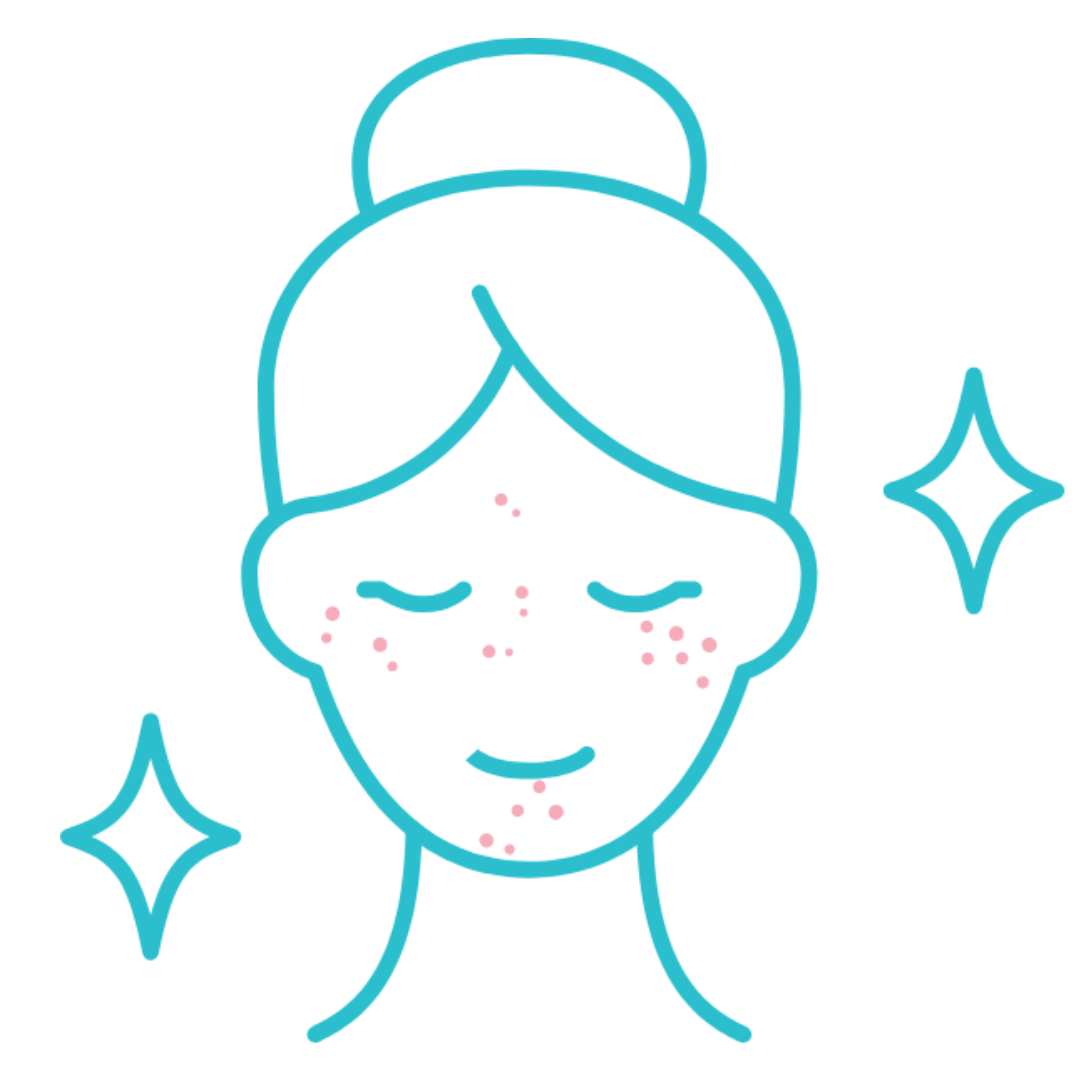
Bumps and pimples
Small red bumps or pus-filled pimples often develop on the skin. These can resemble acne but without the presence of blackheads. A burning or stinging sensation may also occur in these areas.
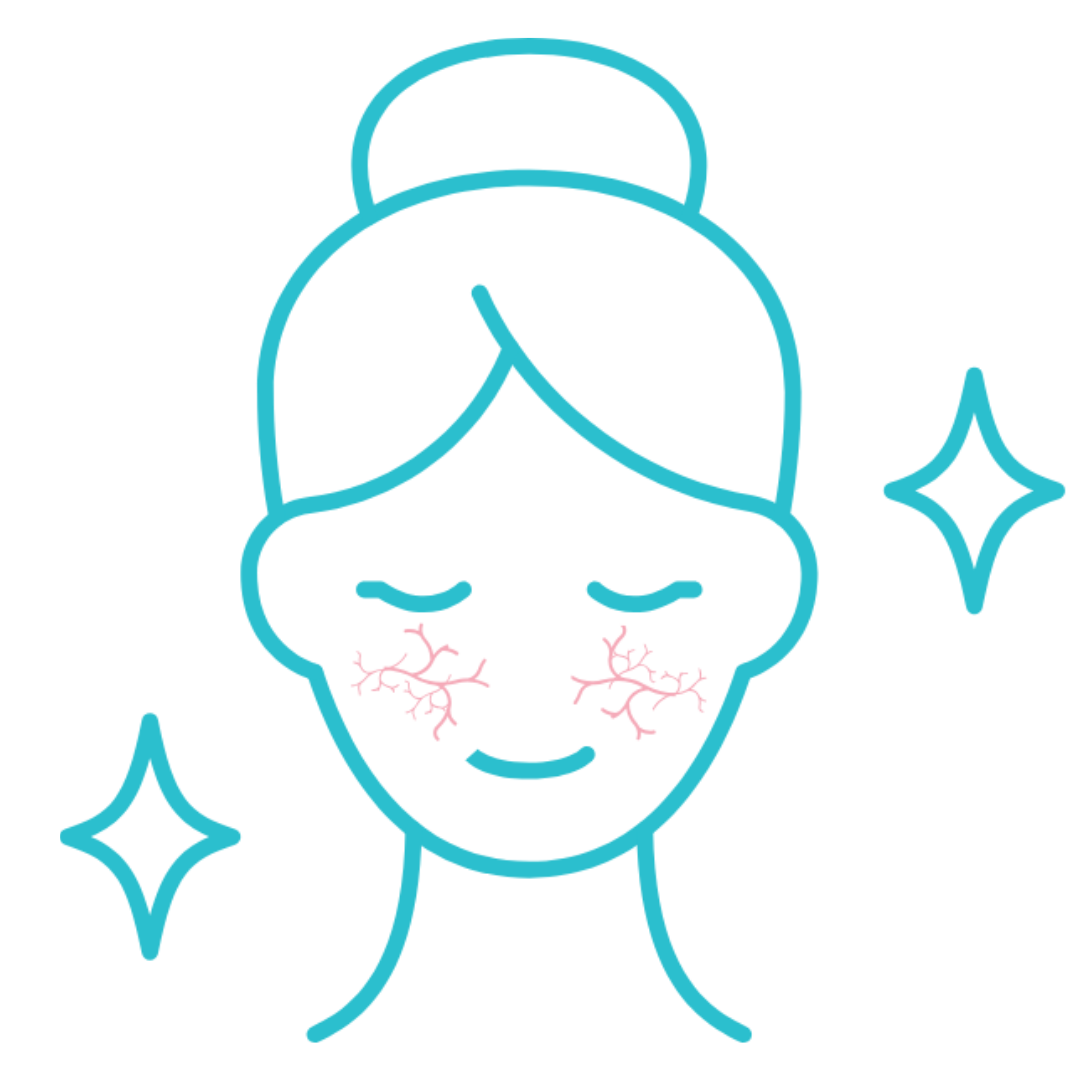
Visible blood vessels
Thin, red lines resembling small blood vessels become visible on the skin.
Symptoms:
Burning or stinging sensation
A burning or stinging feeling is often experienced on the face, accompanied by itching or tightness of the skin.
Plaques
These are raised red patches that appear without affecting the surrounding skin.
Dryness and skin thickening
The central part of the face may become rough and flaky, although some patients have oilier skin. In some cases, rosacea can lead to skin thickening, causing a condition known as rhinophyma, which gives the nose a bulbous appearance.
Eye irritation
Eye irritation is a common symptom in rosacea sufferers, with the eyes appearing watery or bloodshot. This condition, ocular rosacea, has been discussed earlier.
Stages of Rosacea
Rosacea is a progressive skin condition that develops through various stages, each characterized by different symptoms and levels of severity. Understanding these stages is essential for early detection and effective treatment.
Stage 1:
Pre-rosacea
In the first stage, flushing or redness occurs, which is temporary and fades quickly once the cause or trigger is removed. At this stage, functional changes may occur where blood vessels dilate more than before, open wider, and stay open longer. There are no physical signs of blood vessel wall damage at this point.
Stage 2:
Mild rosacea
As time progresses, symptoms become more persistent and noticeable. The facial redness lasts significantly longer—often more than half an hour—and doesn’t fade as quickly as in the pre-rosacea stage. Visible signs of blood vessel damage, such as small red lines (telangiectasia), may appear. These symptoms are not just cosmetic issues but indicate an underlying chronic inflammatory process.
Stage 3:
Moderate rosacea
In the third stage, facial redness remains much longer, even after the triggers disappear. Permanently dilated capillaries (telangiectasia) become clearly visible. Swelling of the face, inflamed bumps, and acne-like papules also emerge.
Stage 4:
Severe rosacea
In this stage, the redness, inflammation, and burning sensation become more pronounced. Inflamed pimples and papules become much more frequent and persistent. A characteristic symptom of this stage is the development of rhinophyma, which causes the nose to enlarge. The blood vessels on the face are prominent, and significant changes in the skin’s shape, tone, and texture occur.
Each stage of rosacea is treatable! Early detection and proper treatment can greatly improve the condition of the skin.
Types of Rosacea
It might be surprising, but there are different types of rosacea. Understanding the differences between them can help in finding the most suitable treatment.
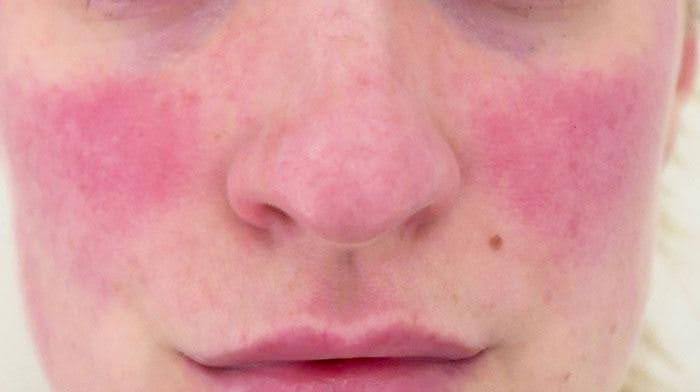
Erythematotelangiectatic Rosacea
Erythematotelangiectatic rosacea, often abbreviated as ETR, is the most well-known type among the four. This condition causes facial redness and flushing. It is most commonly seen on the cheeks, nose, and forehead, but redness can also appear on the scalp, neck, and chin, especially if the rosacea is left untreated.
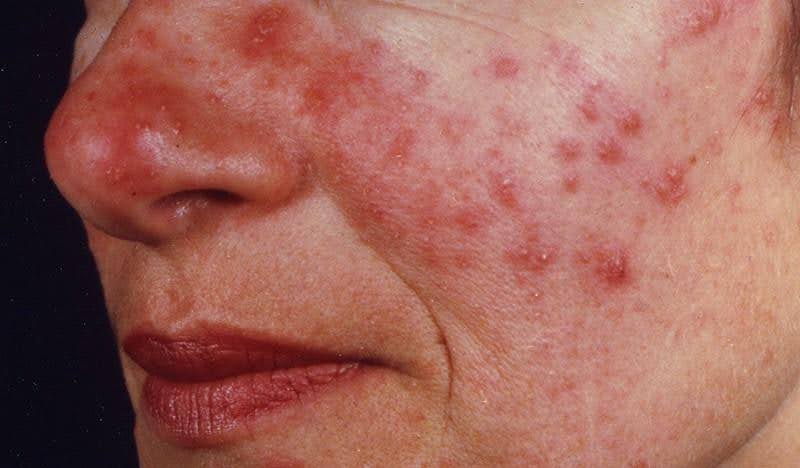
Papulopustular Rosacea
Often called acne rosacea, this type involves acne-like breakouts in addition to the usual redness and inflammation of ETR. These large, painful pimples form deep in the skin. The pustules are pus-filled bumps that appear on the forehead, cheeks, and chin and are often mistaken for acne. Those with papulopustular rosacea may also experience extremely dry skin, which can become thick and scaly, leading to rough patches known as plaques.
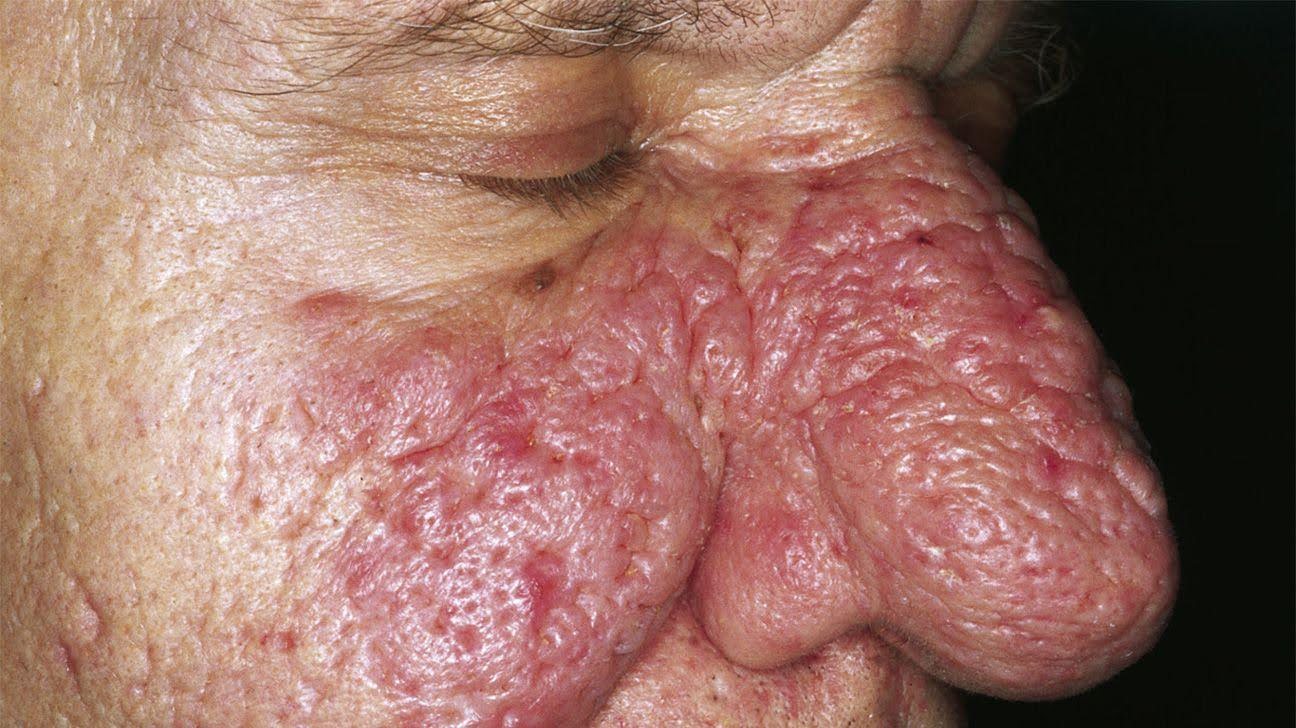
Phymatous Rosacea
Similar to the previous type, those with phymatous rosacea experience thickening of the skin. Over time, the skin can become bumpy and lumpy, with a texture often compared to scar tissue. Rhinophyma, or the enlargement of the nose, is common with this condition. This form of rosacea is more common in men than in women and is almost always the result of poorly treated or untreated rosacea. While it is one of the most severe forms of rosacea, it is also the least common.
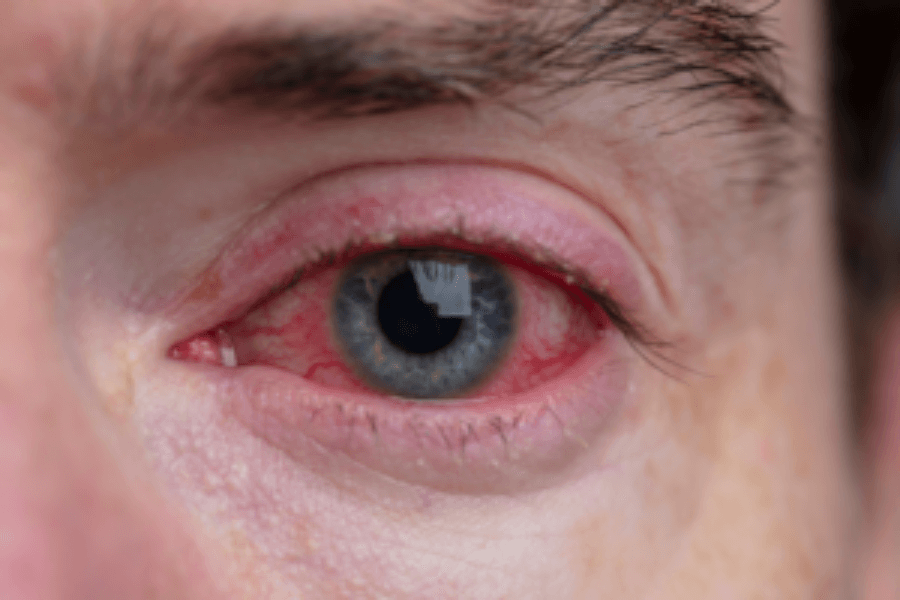
Ocular (Eye) Rosacea
Like other forms of rosacea, this causes redness and inflammation, but it affects both the eyes and the skin around the eyelids. Common symptoms include dry eyes and increased sensitivity, with some cases resulting in blurred vision and light sensitivity (discomfort or difficulty focusing in bright light). This is one of the most frequently misdiagnosed types of rosacea, as many professionals fail to link skin problems with eye issues.
How to tell if it's an eye condition or ocular rosacea?
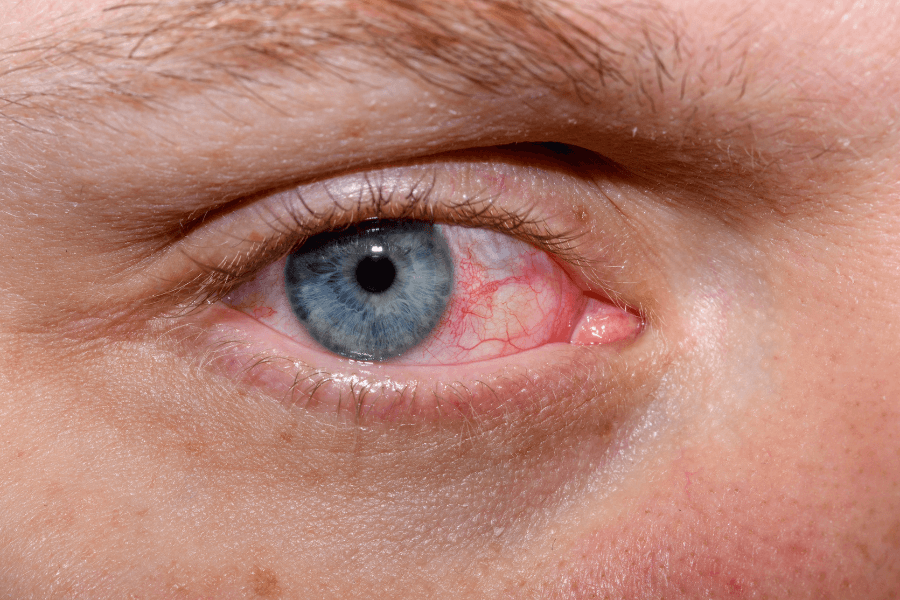

Signs of ocular rosacea that help distinguish it from other common eye conditions include:
>> Visible blood vessels on the eyelids and around the eyes
>> Cysts on the eyes
>> Redness, itching, or swelling of the skin around the eyes
>> Symptoms associated with other forms of rosacea
What factors contribute to the development and worsening of rosacea?
Rosacea can be aggravated or triggered by various external factors. Identifying and managing these triggers is essential for controlling rosacea flare-ups and maintaining healthy skin. Here are some of the most commonly recognized triggers:

Stress: Stress is known to exacerbate rosacea symptoms, as the stress hormone cortisol also affects skin health. Finding effective stress management techniques, such as meditation, yoga, or other relaxation methods, is crucial.

Spicy and hot foods: Monitoring your diet and identifying foods that may worsen symptoms can be beneficial.

UV rays: Ultraviolet radiation from the sun is a significant issue for people with rosacea. Protecting the skin with broad-spectrum sunscreen, wearing a hat, and staying in the shade can help reduce UV impact on the skin.
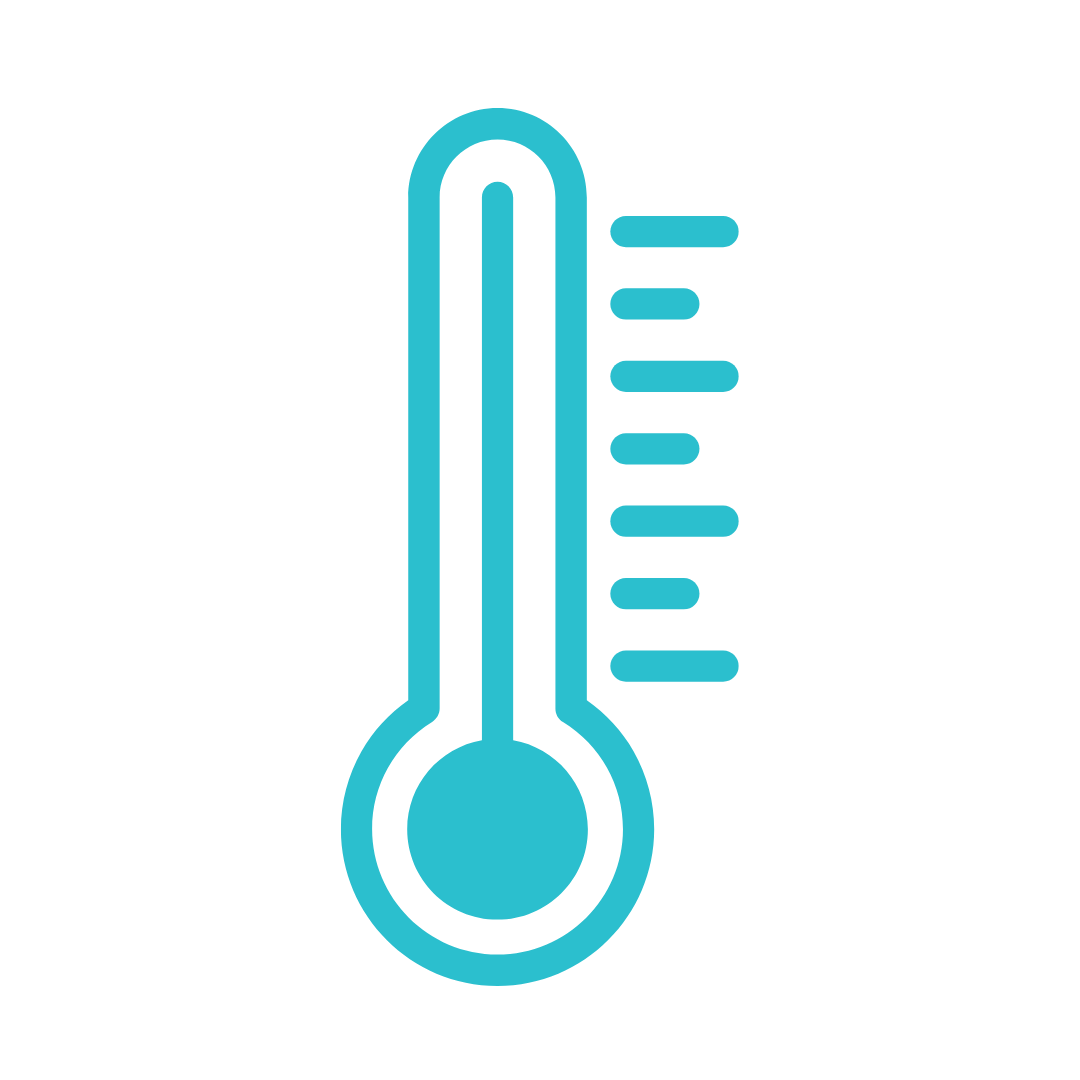
Extreme temperatures: Both very hot and very cold temperatures can trigger symptoms. In cold weather, wearing a scarf to protect the face from the wind and cold can be helpful. In warm weather, staying cool and avoiding overheating is key.

Aerobic exercise: While exercise is beneficial for overall health, intense aerobic activities can lead to rosacea flare-ups. Opting for low-intensity exercises and staying well-hydrated can help manage this trigger.
The Role of Proper Nutrition in Fighting Rosacea
What factors contribute to the development and worsening of rosacea?
Inflammation can occur as a result of oxidative stress in the body. This condition arises when the body is struggling with high levels of oxidants, known as free radicals, which can cause cell damage. Oxidative stress and inflammation can be influenced by certain foods, and modifying one’s diet may help reduce rosacea symptoms.
People with rosacea often have more harmful and fewer beneficial bacteria in their gut. However, with the right diet, it is possible to improve the gut microbiome. Foods that promote the growth of beneficial bacteria in the body can help reduce rosacea symptoms. Such foods include fiber-rich foods, prebiotics, and probiotics. Prebiotic foods help maintain a healthy environment in the gut for beneficial bacteria, while probiotic foods contribute to the introduction of more beneficial microorganisms into the gut.
Beneficial Foods
Given the inflammatory nature of rosacea, reducing internal inflammation can alleviate and even prevent symptoms. Incorporating antioxidant-rich foods into your diet is an excellent way to achieve this. Antioxidants neutralize oxidants, which are one of the causes of inflammation, reducing the negative effects of oxidative stress and potentially influencing the underlying mechanisms of rosacea. Other anti-inflammatory foods include omega-3 fatty acids, which block inflammatory pathways in the body, reducing inflammation. Including omega-3 fatty acids in your diet may help reduce rosacea symptoms, though research in this area is still minimal.
Antioxidant-rich foods: berries, dark leafy greens, carotenoid-containing fruits and vegetables (orange or red-colored), carrots, bell peppers, oranges, peaches, mangoes, squash, etc.
Omega-3 fatty acid-rich foods: fatty fish like salmon, other seafood, flaxseeds, chia seeds, walnuts
Prebiotics and probiotics can play a significant role in reducing rosacea symptoms. Prebiotics are considered the “food” for the bacteria living in the gut, a type of dietary fiber. They promote the growth and activity of beneficial bacteria, contributing to maintaining a healthy gut flora. Probiotic foods contain live beneficial bacteria, which also support healthy gut flora function.
High-fiber foods: whole grains like oats, barley, brown rice, quinoa, whole grain bread, oat bran, fruits, and vegetables
Sources of probiotics include fermented foods: yogurt, sauerkraut, kombucha, tempeh, miso, pickles
If you cannot fully meet your needs for these foods and vitamins through diet alone, consider supplementing your daily routine with natural dietary supplements.
Foods and drinks to avoid
The compound called acetaldehyde, which is produced when alcohol is metabolized, promotes the release of histamine, triggering an inflammatory reaction. Combined with the vasodilating effect of alcohol, it’s no surprise that it causes redness and increased body heat, which can worsen rosacea symptoms.
Capsaicin is the compound in chili peppers that causes the hot, spicy sensation in the mouth. While many enjoy spicy foods, capsaicin binds to a cell receptor called TRPV1, which also causes vasodilation and redness. Therefore, consuming spicy foods can aggravate rosacea symptoms.
Cinnamaldehyde is a compound found in several foods that you may not expect to belong to the same group. Mustard oil, chocolate, tomatoes, cinnamon, and citrus fruits all contain this compound. Similar to capsaicin, cinnamaldehyde binds to a cell receptor called TRPA1, which leads to vasodilation and redness, exacerbating rosacea symptoms.
Although treating rosacea may initially seem daunting, it can be managed effectively with tips and tricks. The most important aspect is to start treatment promptly and support your body and skin with proper skincare and lifestyle adjustments. Many cosmetic products and dietary supplements can significantly help alleviate symptoms.
How to Manage Rosacea in Your Daily Life?
Managing rosacea can vary from person to person, but the goal remains the same: to alleviate or reduce symptoms. What treatment options are available?

Medical Treatment
A wide range of oral and topical medications is available to treat the bumps, pimples, and redness caused by rosacea, helping to relieve symptoms and reduce flare-ups. Doctors may also use laser treatments to remove visible blood vessels and reduce the degree of redness. In severe cases, particularly when rhinophyma develops, surgical intervention may be considered to correct nasal distortion.
While medical and laser treatments can be effective in alleviating rosacea symptoms, these methods are not without side effects. Long-term use of oral medications may lead to digestive issues, and topical treatments, although less systemic, may exacerbate irritation, dryness, and sensitivity. Laser treatments also carry risks. After laser procedures, redness, swelling, and, in rare cases, scarring may occur. Additionally, the effects of the treatment are often temporary, requiring multiple sessions to achieve the desired result, which can be costly.
However, there are other solutions that can be much more natural and effective.
Consider 100% natural, reliable, and risk-free cosmetic oxygen therapy, which improves skin oxygenation, promotes regeneration, and reduces inflammation. Natural cosmetics can also be a good choice for rosacea-prone skin, as these chemical-free products gently care for the skin and help maintain its health. These treatment options are more sustainable and safer for the skin in the long term, especially for those sensitive to traditional medications or laser treatments.
IF YOU'RE LOOKING FOR A TRANSFORMATIVE TREATMENT: OXYGEN THERAPY
Oxygen therapy is an innovative cosmetic treatment that delivers a complex of vitamins and minerals to the deepest layers of the skin using pure oxygen. Oxygen can penetrate deeper into the skin than substances used in traditional cosmetic treatments, thus more effectively assisting in skin renewal.
Oxygen therapy is particularly effective in treating rosacea because it strengthens the immune system, helping to combat internal inflammations that cause rosacea. The treatment also helps to reinforce the skin’s natural protective barrier, reducing the harmful effects of external environmental factors and poor nutrition. Additionally, it deeply hydrates and cleanses the skin, which is crucial in rosacea treatment, where the skin is often dry and irritated. Oxygen therapy also boosts collagen and elastin production, aiding in skin firmness and elasticity.
Our treatment contains 100% natural ingredients, making it completely risk-free. Our expert beauticians create a personalized treatment plan for each guest to achieve the best possible results.
ESTABLISHING A SKINCARE ROUTINE
Proper skincare plays a crucial role in managing rosacea. Using products with natural ingredients and avoiding harmful components can help reduce rosacea symptoms.
When creating a skincare routine, it’s important to choose products that do not trigger negative skin reactions. It’s a good idea to test cosmetic products on your neck before use. If any reaction occurs, discontinue use immediately! For daily care, opt for fragrance-free and rosacea-friendly skincare products and cosmetics. Use minimal amounts of products, and ensure you apply a moisturizer every day to manage dryness. Remember to gently cleanse your face twice daily.
Facial Cleansing Tips:
- It’s important to cleanse your face regularly, but excessive washing can also irritate the skin.
- Choose a gentle, skin-friendly cleanser and avoid using soap.
- Apply the cleanser with your fingertips using circular motions.
- Rinse off the cleanser with lukewarm water. Ensure it is completely removed, as residue can cause irritation!
- Gently pat your face dry with a clean cotton towel.
Avoid Cosmetic Ingredients:
- Alcohol
- Camphor, fragrances
- Glycolic acid, lactic acid
- Menthol
- Sodium laureth (or lauryl) sulfate
- Urea
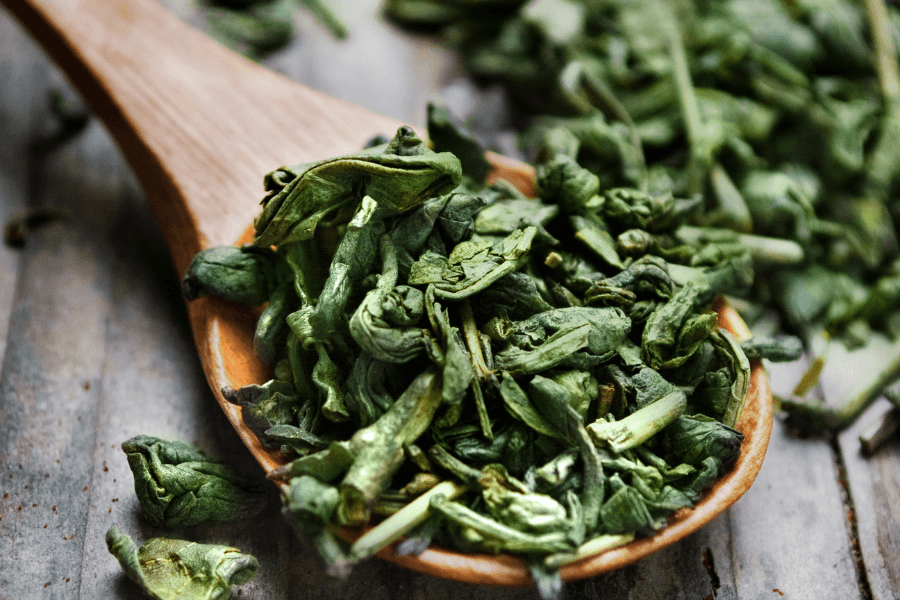
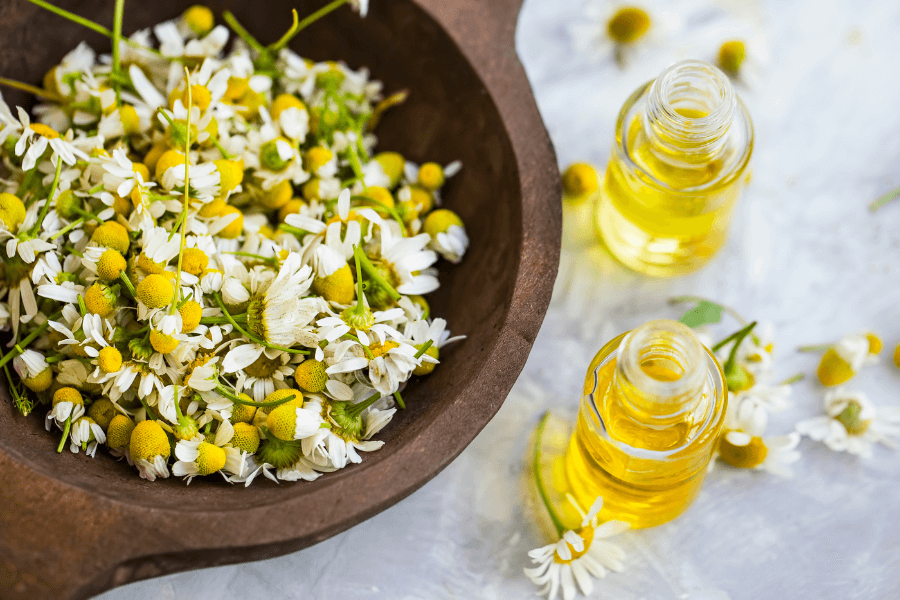
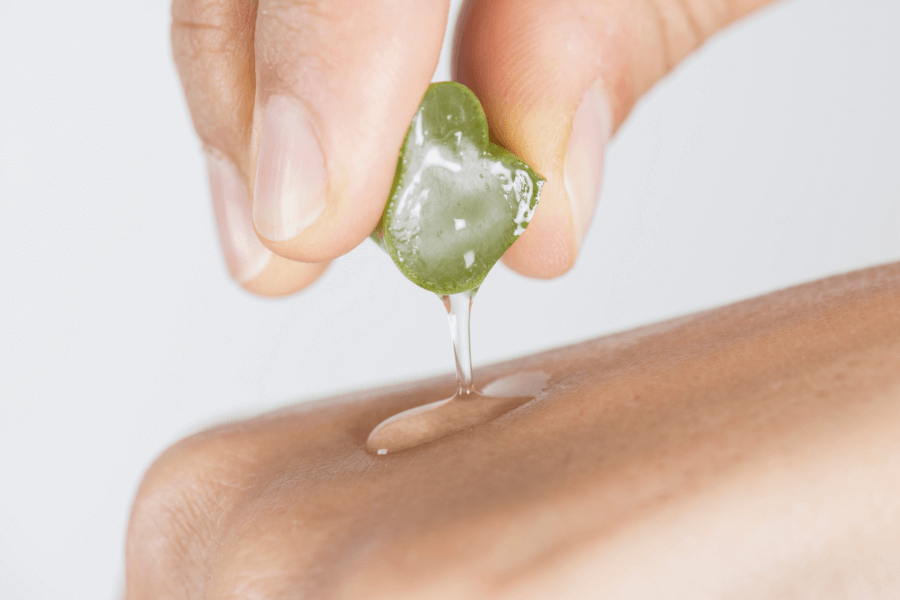
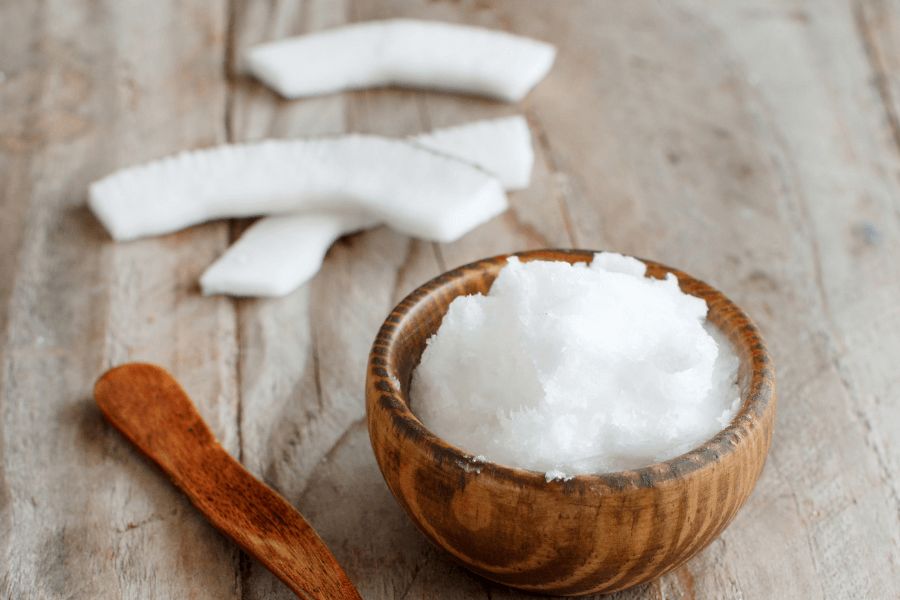
Skin Care and Skin Soothing with the Power of Nature
While some may resort to more radical treatments to alleviate rosacea symptoms, it’s worth considering the benefits of natural methods, which can often be gentler and effective in the long term. As mentioned, one of the best solutions is cosmetic oxygen therapy, which should be complemented with home skin care products. Here are some natural ingredients that can safely help manage rosacea symptoms without side effects:
Natural ingredients for rosacea treatment:
Aloe Vera: Aloe vera gel, found inside the plant’s long, spiky leaves, can be both moisturizing and skin-soothing, making it effective for rosacea. This is partly due to its anti-inflammatory properties, which help hydrate the skin and reduce redness. The gel can be applied directly to the skin and is found in many skin care products.
Chamomile: Chamomile also has anti-inflammatory properties and is often included in rosacea skin care products. It can be used diluted as an essential oil or as a cool chamomile tea compress directly applied to the skin.
Coconut Oil: Coconut oil is an effective moisturizer. Although there are no recent studies specifically showing its effectiveness in rosacea treatment, it is known for its anti-inflammatory, antioxidant, and moisturizing properties. These beneficial properties can help soothe inflamed skin associated with rosacea.
Green Tea: Green tea is rich in antioxidants that help reduce inflammation in the body and skin. The tea can be consumed to enjoy internal benefits, or for external use, a cooled green tea compress can be applied directly to the skin.
It’s important to choose products made from organic ingredients to ensure the highest quality and minimize the chance of artificial substances triggering symptoms.
Try our 100% natural skin care products!
For long-lasting healing, using chemical-free and 100% natural products provides a sustainable solution. Chemical-free products reduce intolerances, as their 100% natural ingredients do not irritate the skin and scalp and act naturally. Using natural products not only helps alleviate symptoms but also aids in prevention!
Our products are excellent pillars for a skincare routine. Here’s a guide to the products to include in your skincare routine if you are dealing with rosacea.
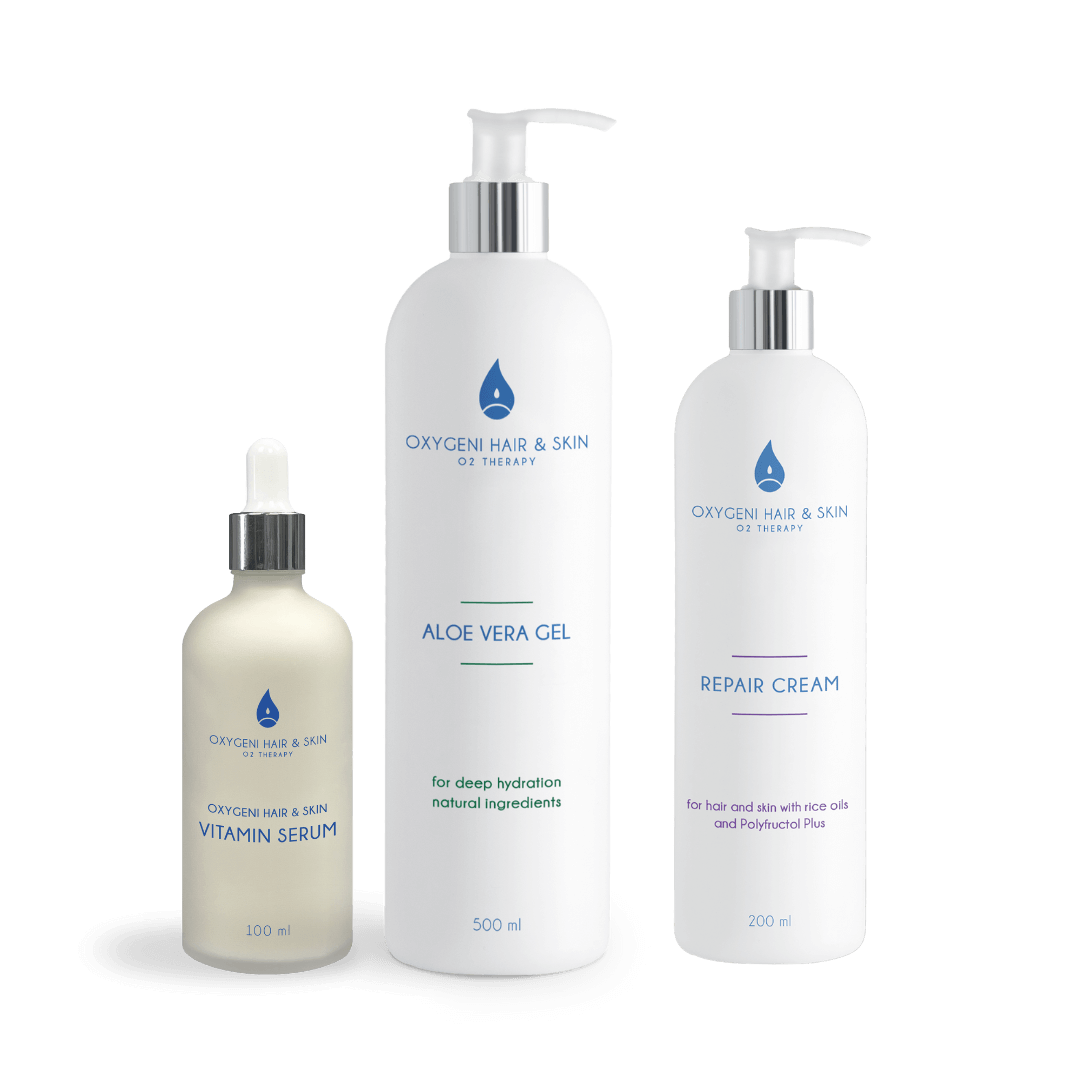
Recommended Products for Rosacea Treatment:
Our products, which are also effective for rosacea, help soothe the skin and alleviate symptoms with their natural ingredients. The Vitamin Serum, Repair Cream, and Aloe Vera Gel together offer a gentle yet effective solution for treating rosacea, without any side effects.
After cleansing, nourish and hydrate your skin with the Vitamin Serum. This serum is rich in vitamins and revitalizing ingredients. Enriched with vitamins A, B, C, E, and antioxidants from red grapes, it provides comprehensive skin care. Its unique formula revitalizes the skin, enhancing its resilience.
In several ways, it is an ideal choice for rosacea treatment:
- Anti-Inflammatory Effect: Antioxidants and vitamins reduce inflammation, alleviating rosacea symptoms like redness and irritation.
- Skin-Soothing Ingredients: Vitamins and minerals soothe and regenerate the skin, reducing irritation and discomfort.
- Hydration: The serum intensely hydrates the skin, improving moisture content and strengthening the skin’s natural barrier, which is crucial for rosacea-prone skin.
Application: For dry skin care, mix 3-5 drops of Med Oil with 5 ml of Pure Aloe Vera and add 1 pipette of Vitamin Serum. Mix in a spray bottle and apply to the affected area, gently massaging in. No need to rinse.
As the final step in your routine, use the Repair Cream, a deeply nourishing luxurious body and face cream. Its special formula intensely hydrates the skin, restoring its natural barrier while providing essential nutrients.
Ingredients: Contains rice oil and macadamia oil, which are rich in antioxidants and essential fatty acids, soothing and regenerating the skin. Grapeseed oil, a strong antioxidant, protects against free radicals. Flaxseed oil, known for its anti-inflammatory properties, supports healthy skin renewal.
Hypoallergenic and Non-Comedogenic: The ingredients are hypoallergenic and non-comedogenic, meaning they won’t clog pores or cause further irritation, making it safe for rosacea.
Sooth your skin with Aloe Vera Gel, made from the highest quality, cold-pressed aloe vera extract, effective for irritated, sensitive skin.
Anti-Inflammatory Effect: Aloe vera’s mild anti-inflammatory properties help reduce redness and irritation, soothing rosacea-affected skin.
Hydration: Provides intense hydration, maintaining moisture levels and strengthening the skin’s protective barrier.
Skin-Soothing and Regenerating: Aloe vera calms and regenerates the skin, aiding in healing and restoring its healthy state.
Skin-Friendly Ingredients: Made from natural ingredients that do not irritate or cause allergies, ideal for rosacea-prone skin.
It works excellently on its own, but when combined with other products, such as serums or oils, it can be even more effective in alleviating rosacea symptoms.
Application:
- For dry skin care: Mix 10 ml of Aloe Vera Gel with 3-5 drops of oil, then apply to the affected area using a spray bottle.
- To accelerate wound healing and treat scars: Mix 3-5 drops of oil with 5 ml of Aloe Vera Gel, then apply to the affected area.

